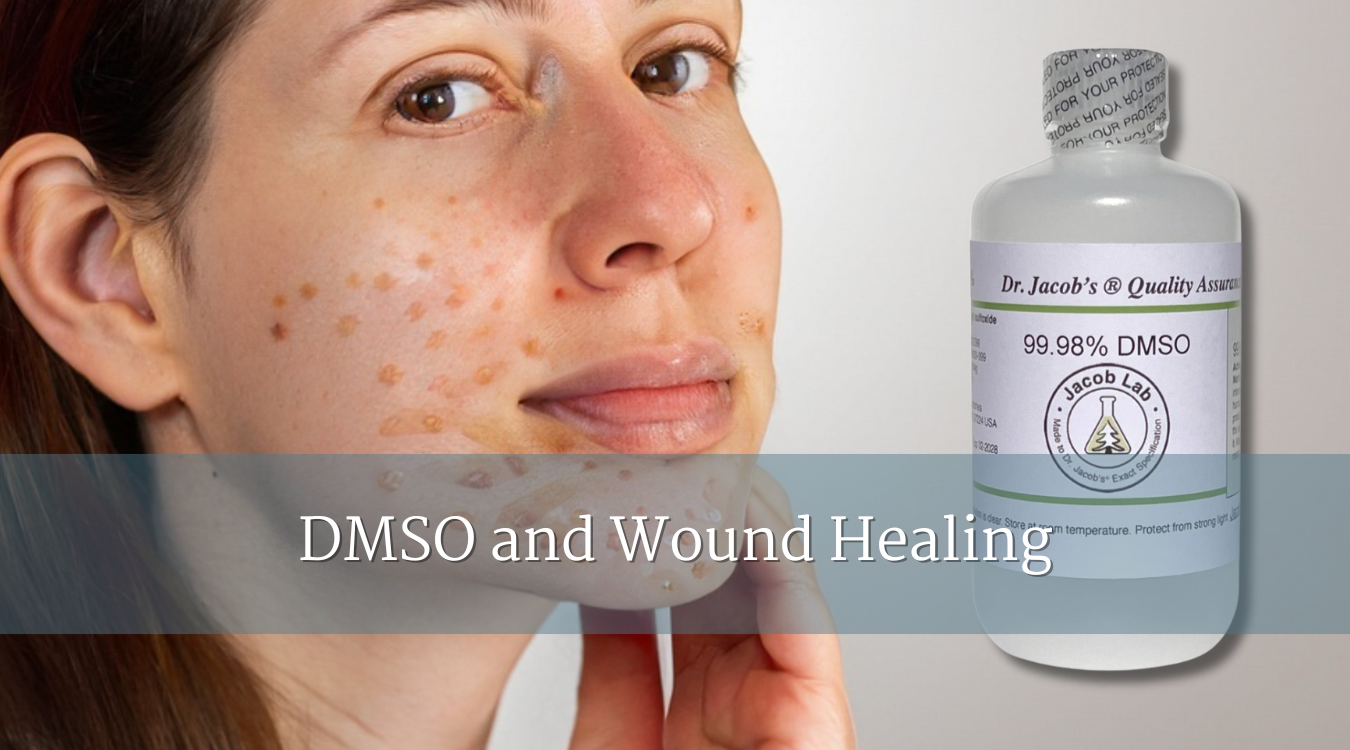
Why People Use DMSO for Wounds
DMSO has been called a “miracle solvent” because of its ability to penetrate the skin and reduce inflammation. Naturally, this led to curiosity about whether it could also help wound healing — from cuts and burns to post-surgical recovery.
But how much of this reputation is backed by research, and what do experts say about its use on open wounds?
What the Research Suggests
-
Animal Studies: Research in animals has shown DMSO can reduce swelling, modulate inflammation, and improve microcirculation around damaged tissue. These effects may create a more favourable environment for healing.
-
Antioxidant Properties: By neutralising free radicals, DMSO may protect cells around the wound from oxidative stress.
-
Antimicrobial Potential: Some studies suggest DMSO has mild antimicrobial activity, which could help reduce infection risk — though this is far from conclusive.
👉 However, human studies are limited, and most data comes from older research that has not been widely replicated.
Dermatologist’s Perspective
A dermatologist would clarify:
-
DMSO is not approved for wound care in humans.
-
Applying DMSO to open wounds may cause irritation, stinging, or carry unwanted contaminants directly into the bloodstream.
-
Standard wound care — cleaning, protecting, and keeping the wound moist — remains the medical gold standard.
👉 In their words: “The theory is interesting, but safety is the priority. We don’t apply unregulated solvents to open wounds.”
Researcher’s View
From a laboratory perspective:
-
DMSO is often used in experiments because it carries substances across cell membranes.
-
This has raised the idea that DMSO could deliver antibiotics or anti-inflammatory drugs directly into wound tissue.
-
Some experimental formulations explore this concept, but these remain in the research phase — not in clinical practice.
Traditional Medicine Lens
In TCM or holistic frameworks, wound healing is often seen as a balance of Qi flow, blood circulation, and heat clearing.
-
While DMSO isn’t traditional, its ability to reduce swelling might be viewed as aiding circulation.
-
Herbal poultices and plant-based remedies are more commonly used in this role.
👉 So, interest in DMSO reflects a modern desire to speed healing by supporting the body’s natural repair systems.
Myths vs Facts
-
Myth: DMSO is a proven wound-healing agent.
-
Fact: Research is limited; no approvals exist for this use.
-
-
Myth: DMSO sterilises wounds.
-
Fact: It has some antimicrobial effects, but not enough to replace proper wound hygiene.
-
-
Myth: DMSO prevents scarring.
-
Fact: No strong human evidence supports this claim.
-
Safety Considerations
-
Do not apply to open wounds without medical supervision.
-
DMSO carries other substances into tissues, raising contamination risks.
-
Mild skin irritation, redness, and garlic-like odour are common side effects.
The Bigger Picture
DMSO remains an experimental interest in wound healing — promising in labs, but not validated in clinics. For now, it’s best understood as a compound that may help scientists develop new delivery systems, rather than a home remedy for cuts or burns.
The safest path is evidence-based wound care, while keeping an eye on research as it unfolds.
Where to Learn More
-
Related: DMSO for Scars and Skin Healing
-
Related: DMSO and Vitamin C
-
Foundation: What is DMSO and How Does It Work?




 DMSO and Cancer: What Does the Research Really Say?
DMSO and Cancer: What Does the Research Really Say?
 DMSO for Back Pain: Relief or Risk?
DMSO for Back Pain: Relief or Risk?













